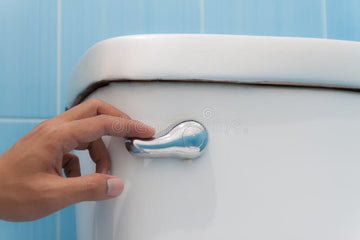As we face escalating environmental challenges across the globe, the urgency for sustainable solutions has never been greater. Among these solutions, the impact of water-saving toilets stands out as a crucial focal point. These innovative bathroom fixtures not only conserve water significantly but also offer a variety of benefits to both the environment and their users. This article explores how water-saving toilets play a vital role in ecological preservation, emphasizing their advantages and importance, particularly for Industry QA professionals.

Growth of Water-Saving Toilets
In recent years, the focus on water conservation has become integral to sustainable practices. The introduction of water-saving toilets illustrates this shift towards environmentally friendly innovations. Traditional toilets can consume up to 7 gallons of water per flush, whereas low-flow toilets use as little as 1.28 gallonsa significant drop in water usage. This change reflects a proactive stance on tackling environmental issues, especially given the increasing challenges related to water scarcity globally.
According to Scope Zero, adopting these technologies is both economically sound and environmentally beneficial, particularly in sectors with high water usage.
Reducing Environmental Footprint with Water-Saving Toilets
Water-saving toilets offer numerous ecological advantages beyond mere water conservation. They contribute to reducing the carbon footprint linked to water treatment facilities. Each gallon of water saved equates to lower energy consumption required for heating, treating, and transporting water, resulting in reduced greenhouse gas emissions. Additionally, decreased water usage alleviates strain on sewage treatment plants, improving efficiency and decreasing the risk of harmful overflow events during heavy rainfall.
Economic Benefits for Industry QA
From the perspective of Industry QA, the financial advantages of installing water-saving toilets are compelling. Facilities that implement these systems can experience notable reductions in utility expenses. The payback period for investing in these technologies is often less than three years, making it a wise financial decision for businesses.
Moreover, companies that emphasize sustainability and reduced environmental impact can enhance their reputation, which is a valuable asset in todays eco-conscious market. Potential clients are likely to trust and support a company that demonstrates a commitment to resource conservation. For instance, Ressler Mateer notes that adopting these systems can lead to significant savings and an improved corporate image.
Innovations in Water-Saving Toilets
Advancements in technology have further improved the efficiency of water-saving toilets. Dual-flush systems grant users the option of a full or half flush, ensuring water is utilized effectively according to needs. Another breakthrough is the pressure-assisted toilet, which uses less water while providing exceptional flushing power due to internal pressure tanks.
The emergence of vacuum-assisted systems and composting toilets also highlights the innovative transformations in traditional plumbing that support water and energy conservation. Such cutting-edge technologies make water-saving toilets a practical choice for both new constructions and retrofitting older buildings, thereby fostering sustainable development.
Public Policy and Environmental Implications
The positive contributions of water-saving toilets are acknowledged by governmental bodies, which often promote their adoption with incentives and rebates. Such support not only encourages businesses to implement these technologies but also accelerates community-wide water conservation efforts.
Public policy plays a pivotal role in raising awareness and facilitating the widespread use of water-saving products. Many municipalities worldwide have started mandating the installation of efficient toilets in new buildings, aiming to decrease water consumption at a broader scale. As regulations and upgrades to infrastructure become increasingly common, the global movement towards eco-friendly practices gains traction and impact.
Challenges and Opportunities
While the advantages of water-saving toilets are substantial, challenges exist. Some users have expressed concerns over the flushing efficiency of lower-gallon models. This presents an opportunity for ongoing research and development to ensure these toilets meet consumer expectations while maintaining sustainability.
Additionally, retrofitting existing buildings with water-saving toilets can present logistical and financial hurdles. However, the long-term benefits of water and cost savings frequently justify the initial investment.
The Future of Water-Saving Toilets
The outlook for water-saving toilets is bright, as heightened awareness of environmental issues combined with continuous technological advancements paves the way for further improvements. As industries place a greater emphasis on sustainability, the integration of water-saving solutions appears inevitable.
Professionals in Industry QA have a crucial role in ensuring that these technologies not only comply with regulatory standards but also exceed performance metrics and fulfill consumer satisfaction. By embracing these advancements, Industry QA can advocate for a healthier planet while demonstrating leadership in sustainable efforts.
Conclusion
The potential impact of water-saving toilets on our environment is immense, providing a straightforward yet effective method to conserve resources and minimize environmental footprints. For Industry QA, implementing such solutions aligns with broader systemic objectives and offers tangible rewards in accordance with modern sustainability criteria.

FAQs
Why are water-saving toilets significant?
Water-saving toilets are essential as they drastically reduce water consumption, alleviating the pressure on natural resources and decreasing operational costs for water utilities.
Do water-saving toilets really reduce costs?
Absolutely! By conserving water, they lead to lower monthly water bills, and in some areas, they even qualify for government rebates, making them a financially viable choice.
Are water-saving toilets effective?
Yes, modern water-saving toilets are designed for efficiency, ensuring effective waste removal with less water due to advancements like dual flush and pressure-assisted systems.
For more information about water conservation technologies, visit the American Home Shield Guide.






